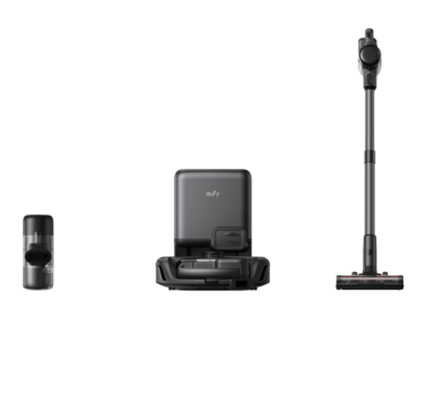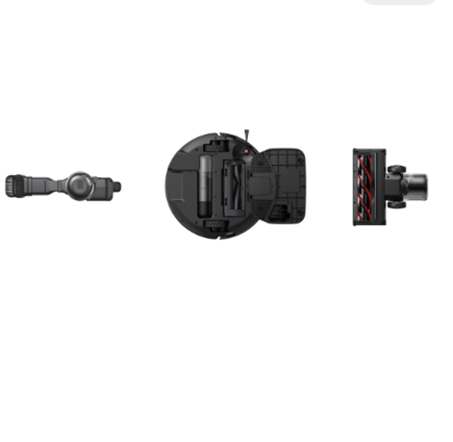August 7, 2025
How Powerful Should a Vacuum Be for Deep Cleaning?
Finding the most powerful vacuum cleaner for deep cleaning can feel like navigating a maze of options. With varying power levels, it’s crucial to understand how suction power impacts cleaning efficiency. Vacuum strength is key for effectively tackling diverse surfaces and stubborn debris. Different floor types and cleaning needs demand varying levels of suction power. Whether dealing with plush carpets, sleek hardwood, or the ever-pesky pet hair, knowing the ideal power specifications ensures a thorough clean. In this guide, we delve into the nuances of vacuum suction power and how to select a model that suits your specific cleaning requirements—especially if you’re looking for the most powerful vacuum cleaner to get the job done right.

Understanding Vacuum Suction Power
What is suction power?
Suction power refers to the vacuum’s ability to lift and remove dirt from surfaces. It’s a measure of the vacuum’s strength in pulling dirt and debris into its collection bin. The stronger the suction, the more effective the vacuum is at pulling dirt out of fibers and crevices. Suction power is a critical factor in determining a vacuum’s overall performance, especially for deep cleaning tasks where debris might be deeply embedded in surfaces.
Common units: air watts, water lift, pa
Various metrics express suction power, with air watts (AW) being a popular choice due to its comprehensive reflection of both suction and power efficiency. Water lift measures the force required to suck water vertically, providing a direct indication of suction strength. Another critical unit is pascals (Pa), particularly relevant for robot vacuums. Each unit offers insight into a vacuum’s capabilities, allowing users to judge its suitability for different cleaning challenges.
Ideal Suction Levels by Floor Type
Carpet suction requirements (200–400 AW, 50–100 in water lift)
Carpets, with their dense fibers, demand higher suction levels for effective cleaning. A vacuum with suction power between 200 to 400 air watts or a water lift range of 50 to 100 inches can effectively draw out dirt and allergens embedded in carpets. This ensures a thorough cleanse, maintaining carpet hygiene and appearance. Adequate power prevents the embedment of dirt and extends the carpet’s life.
Hardwood and tile: moderate suction to avoid scattering (100–150 AW)
Cleaning hardwood or tile surfaces requires a balance between suction power and scattering control. Using a vacuum with a moderate suction level of 100 to 150 air watts helps prevent debris from being blown around. The right balance ensures efficient cleaning without damaging delicate floor surfaces or causing the debris to spread. This level of suction aids in capturing dust and small particles effectively.
Choosing Suction Power for Pets & Allergens
Pet hair needs: 150+ AW or 7,000–15,000 Pa
Pet owners understand the perennial battle against pet hair. The ideal vacuum for this task should have suction power exceeding 150 air watts or between 7,000 to 15,000 pascals. This power range ensures that even the most stubborn pet hair is effectively lifted from floors and upholstery, maintaining cleanliness and reducing allergens.
Why sealed filtration and brushroll design matter
Deep cleaning goes beyond high suction power. A sealed filtration system ensures all captured allergens and pet dander stay within the vacuum, preventing them from escaping back into the air. Additionally, a thoughtfully designed brushroll helps in agitating and lifting embedded hair and debris, enhancing the cleaning process. These design elements work in conjunction to guarantee a superior clean.
Suction Meets Design: Airflow and System Efficiency
Balancing suction and airflow (CFM + water lift)
Effective vacuum cleaning relies on balancing suction and airflow. A balance is crucial as airflow, measured in cubic feet per minute (CFM), helps move debris towards the vacuum’s collection chamber, complementing suction power. A harmonious interaction between CFM and water lift enhances overall cleaning efficiency, ensuring that more than just surface-level dirt is removed.
Why design, seals, motor shape matter
A vacuum’s design significantly impacts its performance. Proper sealing prevents loss of suction power, while a well-shaped motor can enhance airflow and efficiency. These design aspects, including the integrity of seals and motor configuration, contribute to maintaining optimal power levels, ensuring the vacuum operates at its peak during cleaning tasks.

Real‑World Tips & Models Featuring Proper Suction
Why using slow vacuuming improves deep cleaning efficiency
A eufy engineer advises on a key cleaning technique: slow vacuuming. By moving the vacuum head slowly, users allow the suction to thoroughly extract debris from deep in the carpet’s fibers. This method maximizes cleaning efficiency, ensuring a comprehensive clean. Pausing over high-traffic areas can especially enhance dirt and allergen removal.
Examples and notes on models with ideal suction and practical performance
For those seeking effective vacuum models, the eufy Robot Vacuum 3-in-1 E20 stands out. It blends mobility with strength, meeting diverse cleaning needs. Additionally, eufy’s pet-hair series robot vacuums provide notable suction capabilities, augmenting practical performance with automated convenience. These models exemplify ideal suction, offering efficient and versatile cleaning solutions.
Conclusion
Choosing the right vacuum cleaner is pivotal for maintaining a clean and healthy living environment. Understanding suction power—expressed through metrics like air watts, water lift, and pascals—is essential. By matching the vacuum’s power level to cleaning needs, whether for carpet, hard surfaces, or pet hair, users ensure optimal performance. Real-world tips, like slow vacuuming, further enhance deep cleaning capabilities. With the right vacuum and techniques, maintaining a pristine home becomes a more achievable task, contributing to overall well-being.
